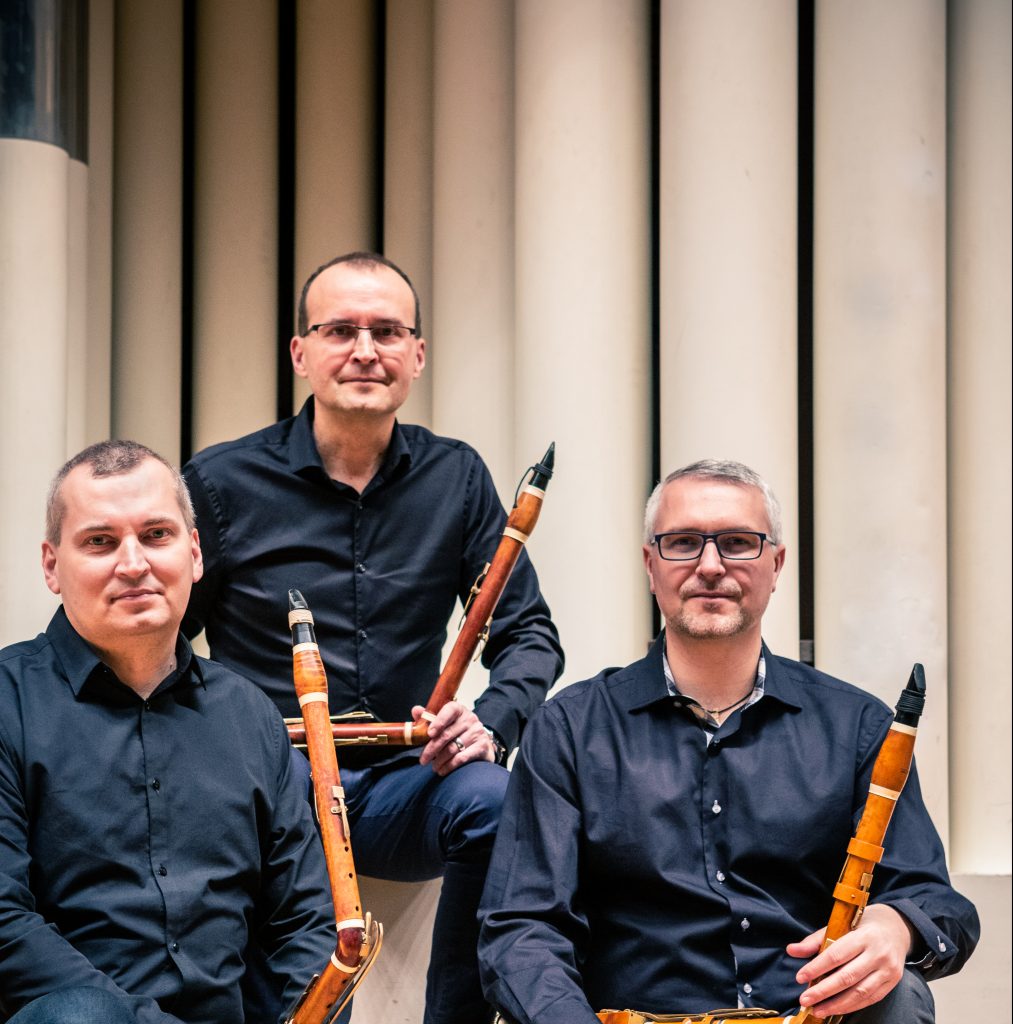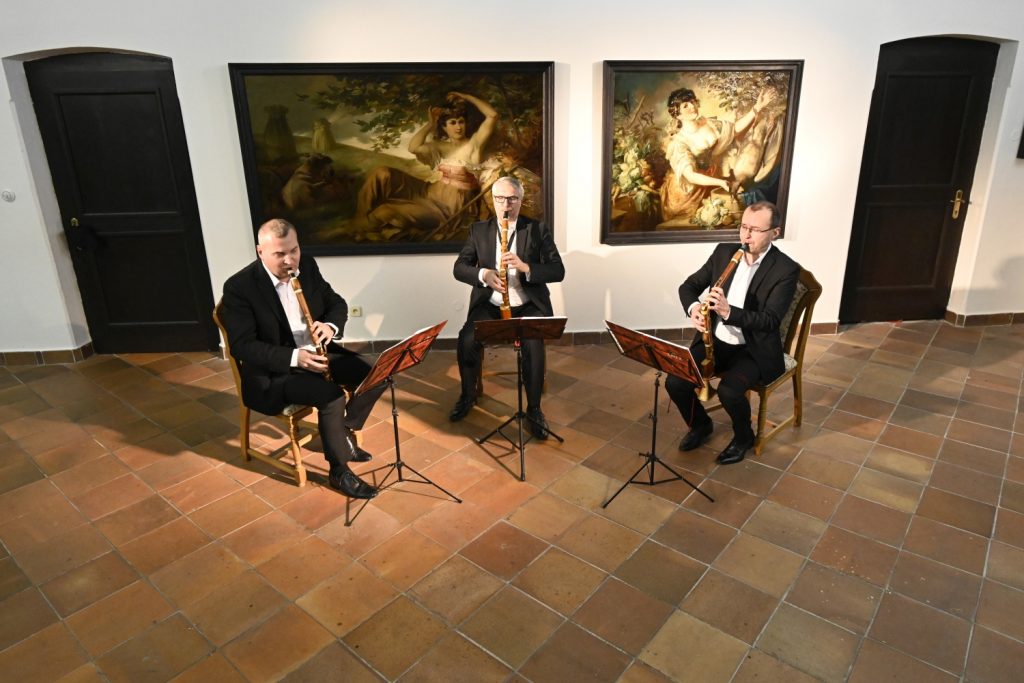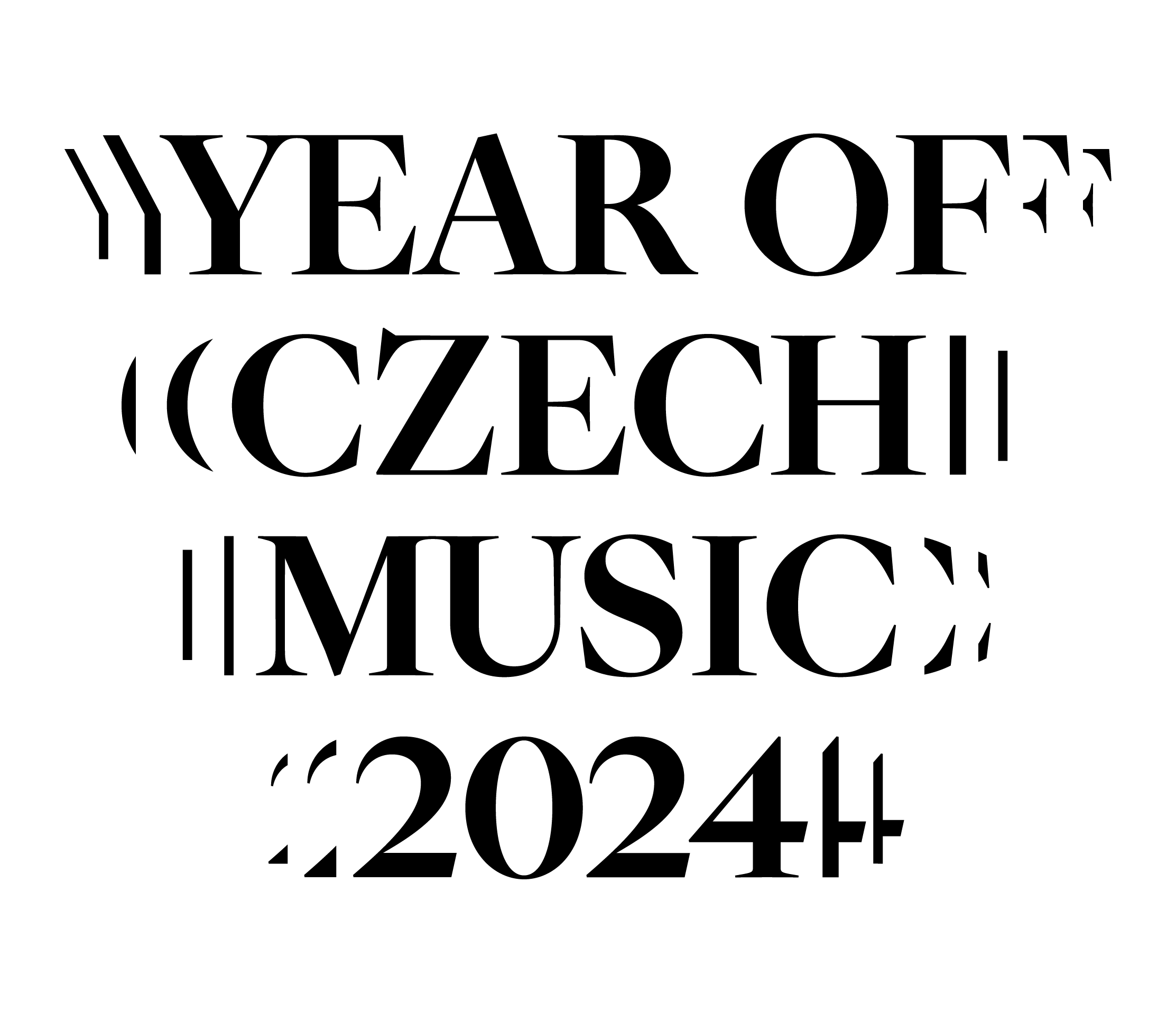Lotz Trio is a formation named after the phenomenal instrument maker Theodor Lotz (1746–1792), who became famous for improving the basset horn in Pressburg and Vienna. The ensemble regularly perform on replicas of historical basset horns include Wolfgang Amadeus Mozart’s Terzetti, Divertissement pour Trois Cors de Bassett by Georg Druschetzky and also period arrangements from Mozart‘s operas The Magic Flute, The Marriage of Figaro and Don Giovanni. His repertoire also includes other compostitions for the basset horn trio such as Terzette by clarinet virtuoso Anton Stadler, Divertimentos by Vojtěch Nudera and Trios by Antonín Volánek.
Lotz Trio produced several premiere recordings: on the debut CD (Music fund in 2008) Lotz Trio recorded Partita in C major by Johann Josef Rösler and a unique set of compositions by contemporary Slovak composers Martin Burlas, Marián Lejava, Daniel Matej, Bošek Milakovič and Marek Piačeka, written for historical basset horns. For Hevhetia label (2009) the Trio recorded a complete Divertissement Pour Trois Cors de Basset by Georg Druschetzky and on Mozart‘s recording Corni di Baßetti period arrangements from Mozart‘s operas The Magic Flute and The marriage of Figaro and also Sei Notturni for vocal trio and three basset horns. In 2019, the Trio recorded an exclusive recording of a public concert for Radio and Television of Slovakia entitled „Mozart‘s Magic Basset Horn“.
The Lotz trio has performed on leading stages as The Metropolitan Museum of Art in New York, Early Music Festival in Stockholm, Musikinstrumentenmuseum in Berlin, Koncertkirken in Copenhagen, Sigurjón Ólafsson Museum in Reykjavík, Schloss Mirabell in Salzburg, St. Wenceslas Music Festival in Ostrava, Bratislava Mozart Festival and others. In recent years, the formation has devoted itself to the systematic development of musical culture in Slovakia in cycle “Lotz Trio in Slovak Chateaux”.
About the music
All of music for basset horn trio falls under the category of what is known as Harmoniemusik, a German word denoting music for wind instruments. This can be for forces ranging from a simple duet to the large ensemble required for Mozart’s Gran Partita KV 361. The most common ensemble for performing Harmoniemusik was the wind sextet or octet with pairs of clarinets, horns and bassoons, and often, oboes. But the basset horn trio was not an uncommon ensemble formation in the late 18th century and quite a lot of music has survived. By and large the repertoire consisted of music for entertainment rather than serious compositions which would have required all of the listener’s attention. Thus the works were often called „divertimenti“, „serenades“, „parthies“, etc. But true to the nature of much music of the late 18th century, beneath the surface of simplicity could be found considerable depth.
It is probable that the basset horn trios composed by W. A. Mozart were written for „Hausmusik“ evenings at the home of the Dutch botanist Nikolaus Joseph Franz von Jacquin. Mozart was often to be found at the von Jacquin household in the early 1780s. At this time chamber music would be performed by Mozart, von Jacquin’s son and daughter, and other musicians living in Vienna, such as the basset horn virtuosos Anton and Johann Stadler. The well-known „Kegelstatt“ Trio (KV 498) is thought to be the fruit of one such evening’s music-making. These were musicians of refinement and taste who clearly inspired Mozart to produce chamber music at its most subtle and inventive.
The Mozart divertimento on the program here is charakteristic five-movement work with fast outer movements (both end with a rondo) and with minuets and slow movement in the middle. Each of the three basset horn parts is as interesting and challenging as the other, alternately taking the melody and the role of accompanist. It is interesting to note that, although the three instruments are identical, each player stays confined to a specific range on the instrument. The effect is not unlike that of a string trio with the third part corresponding to the cello, the second part to the viola and the first part to the violin. Strangely, from our twentieth-century perspective, the basset horn trio was a somewhat popular ensemble in the late eighteenth century. Anton Stadler not only excellent as a player of the basset horn, but also wrote many compositions for the basset horn trio, as did Juraj Družecký (Georg Druschetzky) and others. It seems clear that the instrument was popular at the Central Europe.
Popularity of the basset horn is underlined by works of (in Slovakia working) Juraj Družecky (1745 – 1819). Divertimento on the program is choosen from the collection of 32 movements called „Divertissement Pour Trois Cors de Bassett“. Družecky’s „Divertissement“ together with Mozart‘s „25 Stücke“ and Stadler‘s „18 Terzetti“ create multiform set of parts out of which individual divertimentos are freely composed. The idea behind these collections conjures up a vivid image the circumstances under which they would have been played. This was music composed strictly for entertainment, and was probably used in much the same way as the jazzman’s Fake Book is used today. The three members of a basset horn trio would show up at a party or a café (exclusively at a circle of period noble families!) set up in a corner, and play these pieces for hours. In this sense, Harmoniemusik produced by basset horn trio formation can be seen to have been the radio or CD player of the 18th century for exclusive high society entertainement.
Very succesful at the repertoir of the basset horn trio were also charming arrangements of arias from Mozart’s Die Zauberflöte (also included on the program) and Le nozze di Figaro. The idea behind the arrangement (not only operas, but also symphonies, oratorios and other instrumental music) is clear: without the possibility of listening to a recording or radio transmission of, for example, Die Zauberflöte, it would be possible, at least to enjoy the melody and harmony of the music as rendered in an arrangement for the smaller (and less expensive) forces of a wind ensemble.
A few notes to basset horn and Theodor Lotz
Invented just up the Danube at Passau in the 1770s, the basset horn in F (sort of alto clarinet) was virtually perfected in the 1780s by „K.K. Hofinstrumentenmacher“ (instrument maker at the imperial court) Theodor Lotz, after whom the „Lotz“ Trio is named. In the Pressburg (Bratislava) and Vienna living Theodor Lotz (1747/8 – 1792) is one of a few instrument makers so credibly associated with a composer of standing of Mozart, or a player on the level of Anton Stadler. Lotz is not only guaranteed a place in the history of music because of his connection with these maestri, but luckily also because of the superb instruments that have survived the 200 years between his death in 1792 and today, which serve as a testimony to his great abilities as craftsman. The recently discovered set of three basset horns in the castle Krásna Hôrka in eastern Slovakia serves as a jewel in the crown of the Lotz legacy. Survive basset horns made by Theodor Lotz are actually the most often copied instrument for making music on the period basset horns.
Ronald Šebesta – basset horn II
Igor Františák – basset horn III








